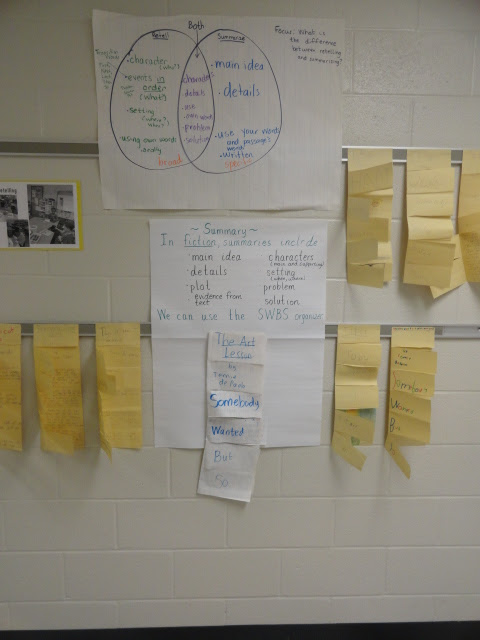Non-Fiction-Final SQ3R post
SQ3R stands for Survey, Question, Read, Recite, Review
Review-SUMMARIZE
Before teaching the SQ3R process, I did some research (as I do before I fathom tricky or unknown territory). During my research, I stumbled upon the book, Summarizing, Paraphrasing, and Retelling: Skills for Better Reading, Writing, and Test Taking written by Emily Kissner, and the book is a Heinmann publication. In this book, the author distinguishes the differences in paraphrasing, retelling, and summarizing. Chapter two also extinguishes myths about each and gives the reader a better understanding of paraphrasing, retelling, and summarizing. Here are some things she states about summarizing:
1. A summary should be shorter than the original text.
2.A summary should include the main ideas of the text.
3. A summary should reflect the structure and order of the orignal text.
4. A summary should include important details.
In this series of lessons, the students had a lot of practice summarizing using fiction and non-fiction. I started with fiction first using a variety of strategies and graphic organizers. Then, students summarized non-fiction using different graphic organizers.
Before teaching my students how to summarize, I had them practice retelling fiction and non-fiction texts. During the lessons detailing summarizing, I wanted the students to understand how to summarize fiction and non-fiction. I had determined that I wanted them to be able to :
- locate important events from the story of fiction texts, passages, and articles. I introduced my students to the Somebody, Wanted, But, So graphic organizer. Be sure to visit The students used this organizer during and after reading to help them remember what they read, summarize, and gather supporting details. Class discussions, lessons, and modeling consisted of each part of the organizer. Students also had to "prove" using evidence from the story to support their findings during their reading. After much discussion, we began creating thoughts and phrases that helped us with our evidence from the text(s). Therefore, I created a large anchor chart similar to this one at Create.Teach.Share. Then, I downloaded this for each student's notebook. Reading skills used during these applications include identifying conflict/resolution, identifying differences, goals, and motivations, identifying main idea, and details, recognizing cause and effect relationships, making generalizations, understanding how shifting the point of view changes the aspect of the story. To grab the booklet organizer ready for students to use with reminders of each task, click here or visit my TpT store.
- teach students how to identify text structures (compare and contrast, problem/solution, chronological order, cause and effect, etc.) to improve reading comprehension in non-fiction. (I used the SWBS organizer for non-fiction also, but I also have other organizers to aide in the text structures process-to be uploaded soon.) Other organizers used for non-fiction include the 3-2-1 and this booklet.













































No comments:
Post a Comment